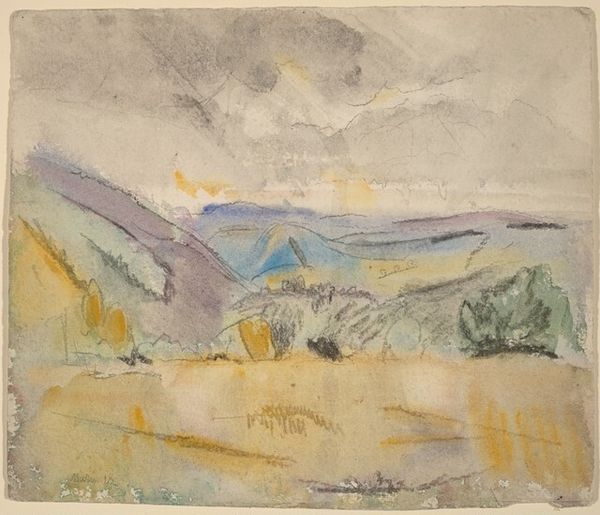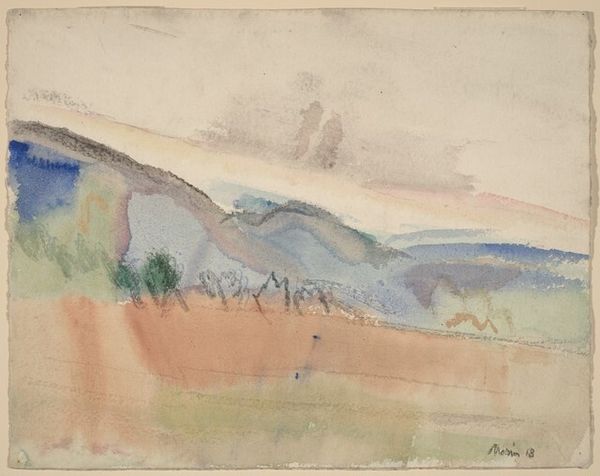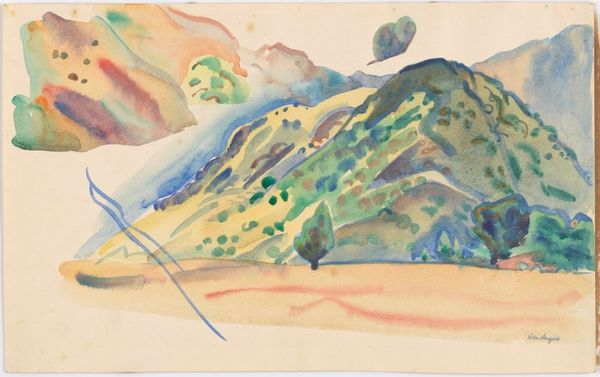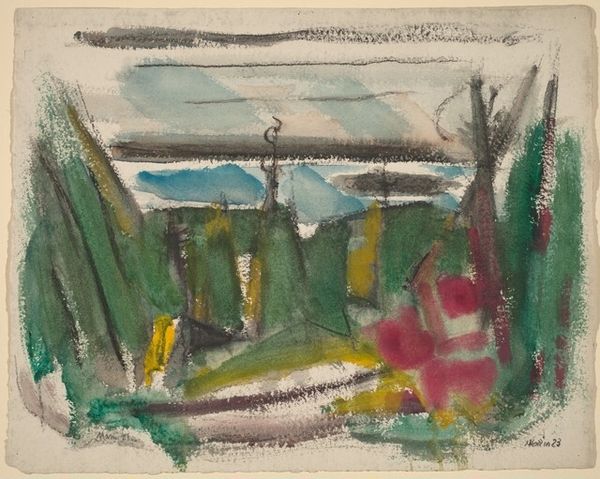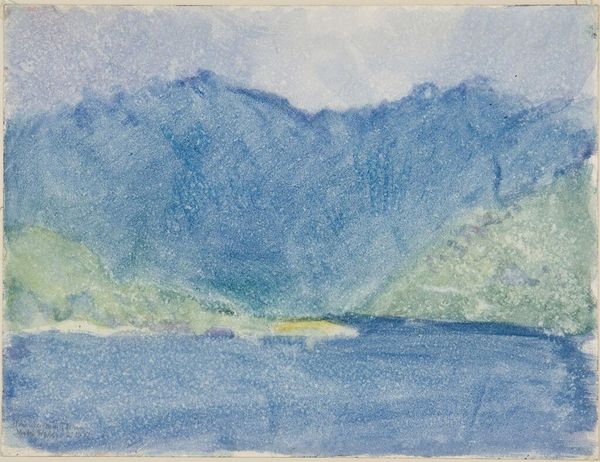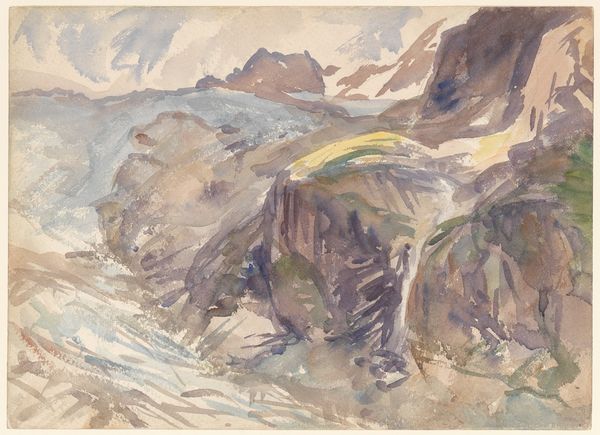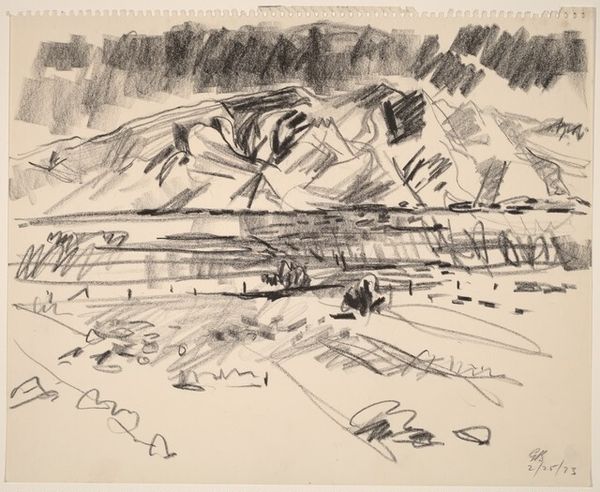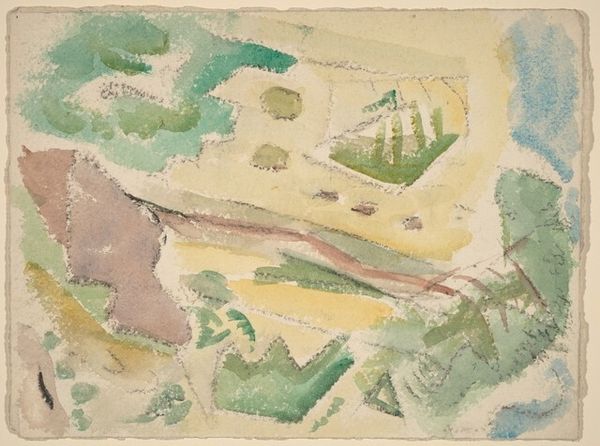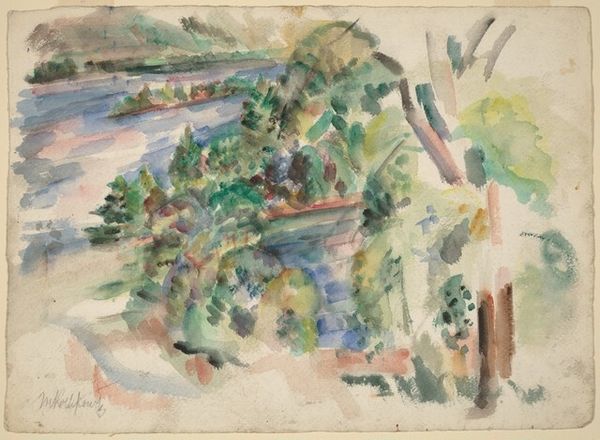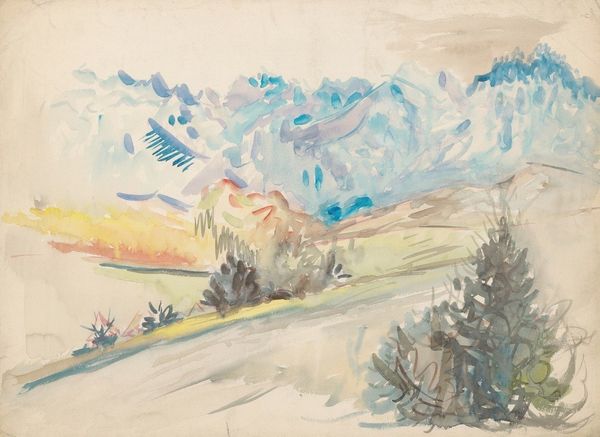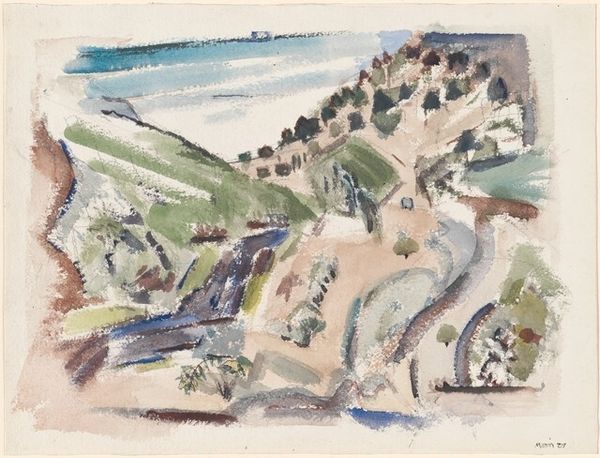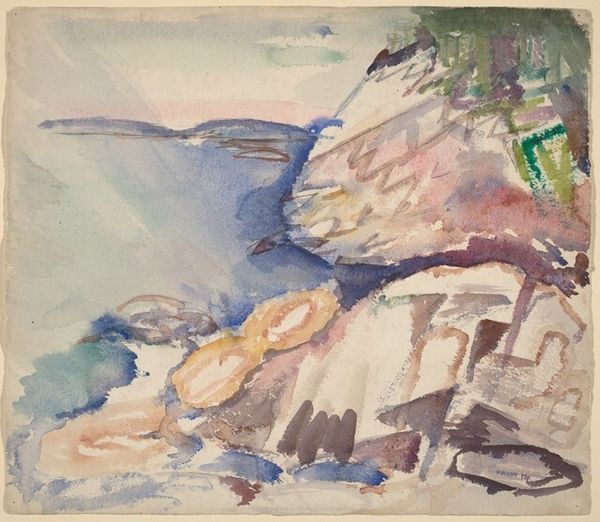
drawing, plein-air, watercolor
#
precisionism
#
drawing
#
plein-air
#
landscape
#
figuration
#
oil painting
#
watercolor
#
geometric
#
modernism
#
watercolor
Dimensions: overall: 44 x 56.5 cm (17 5/16 x 22 1/4 in.)
Copyright: National Gallery of Art: CC0 1.0
Editor: This is John Marin's "Echo Lake, Franconia Range, White Mountain Country," created in 1927 using watercolor. I'm struck by how he captured this immense landscape with such quick, fluid strokes. What do you make of Marin's process here? Curator: I see Marin grappling with the very act of representing nature through mass production. This watercolor, likely a plein-air study, hints at the artist’s engagement with the materials – the paper, the pigments, the brush. How do these accessible materials and the immediacy of the medium challenge traditional oil painting, the then-accepted art form? Editor: That's a great question. So, by choosing watercolor and working outdoors, he was consciously distancing himself from more traditional methods? Curator: Precisely. The "how" of the piece – the fast, repeatable strokes – echoes the rapidly changing landscape due to industrialization and increased consumerism, like a reaction against it. Note, how his technique becomes a statement about artmaking, democratizing and detaching the labor from academic pretenses. Does that connection to production resonate with you? Editor: Absolutely. Looking at it that way, the almost hasty feel speaks to that quickening pace of life, that emerging mass culture in the 1920s. Curator: And his choice of subject – a popular tourist destination. Consider how landscapes were commodified, reproduced on postcards and in travel brochures for mass consumption. Editor: So, Marin is not just depicting a scene, he's reflecting on how we experience and consume nature through these new channels of production and visibility? It changes everything for me, thinking about it not as a pretty landscape, but as a commentary on mass culture. Curator: Indeed, we've moved beyond a simple landscape to seeing it as a piece embedded within a much broader conversation of making and experiencing the world.
Comments
No comments
Be the first to comment and join the conversation on the ultimate creative platform.
